Comet 73/P Schwassmann-Wachmann 3
2006 Return
The 2000 return of the comet was poorly placed and I was not able to make any observations. however, the 2006 return was very favourable, and some predictions had the larger fragments reaching around 7th magnitude. Also, early observations showed that what were originally 4 fragments, now numbered over a dozen. Each fragment was identified by a letter. Fragments "B" and "C" became the brightest, reaching around 7th magnitude. Several other fragments were also bright enough to be observed visually. The graphic below, from Seiichi Yoshida's comet page, illustrates how the fragments were designated.
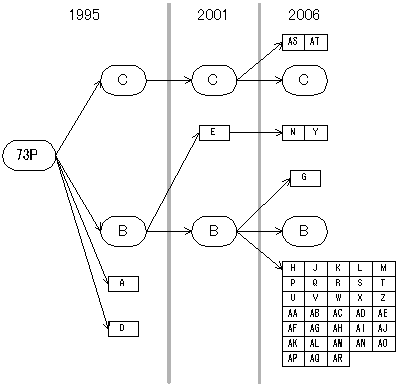
The first night I was able to image the comet(s) was March 5. On this night I only imaged fragment "C".
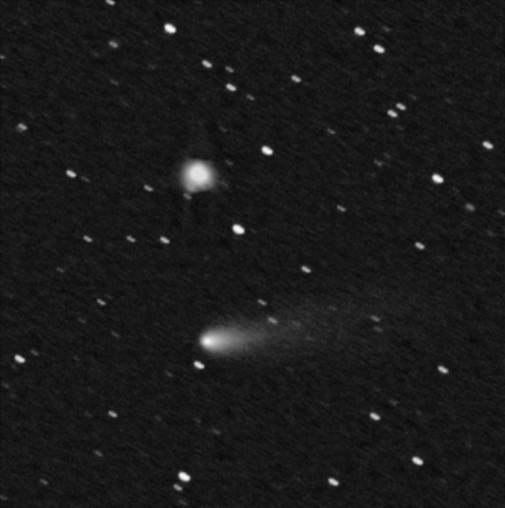
Comet Schwassmann-Wachmann 3: fragment "C". March 5, 2006.
Combination of 5, 3 minute images. SBIG ST-9E CCD.
16" f/10 schmidt-cassegrain with f/6.3 focal reducer.
On April 2, I imaged both fragments "B" and "C".
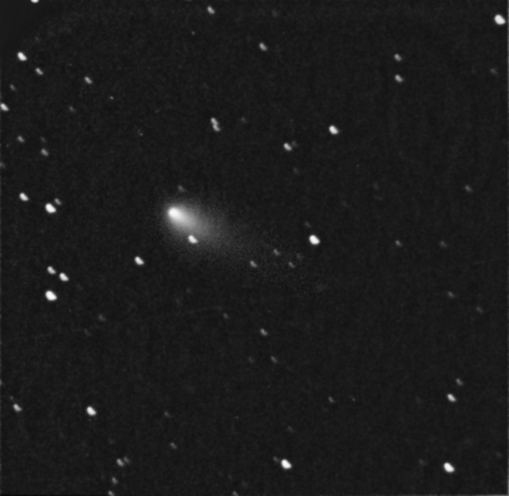
Comet Schwassmann-Wachmann 3: fragment "B". April 2, 2006.
Combination of 10, 1 minute images. SBIG ST-9E CCD.
16" f/10 schmidt-cassegrain with f/6.3 focal reducer.
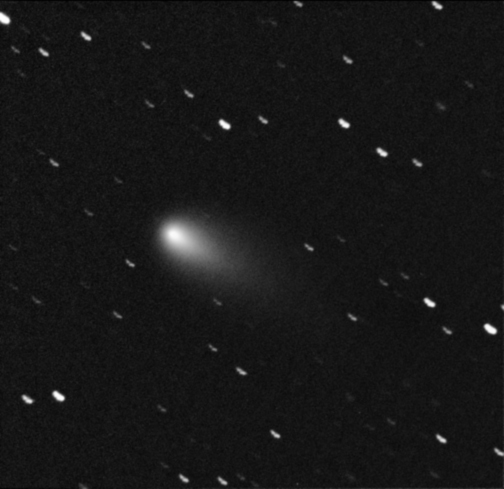
Comet Schwassmann-Wachmann 3: fragment "C". April 2, 2006.
Combination of 10, 1 minute images. SBIG ST-9E CCD.
16" f/10 schmidt-cassegrain with f/6.3 focal reducer.
On April 30, I tried imaging a number of fragments. "B", "P", and "R" were easily recorded, however fragment "G" was very faint. I managed to miss imaging fragment "C", which was the brightest of the fragments by making a dumb mistake. In order to save time, I planned to image fragment "B" and the fainter fragments with the 16" telescope. Fragment "C" I would image with the 10". Unfortunately, instead of fragment "C", I imaged fragment "B"!!! Sometimes it is surprising the idiot things you do during a long night!!!
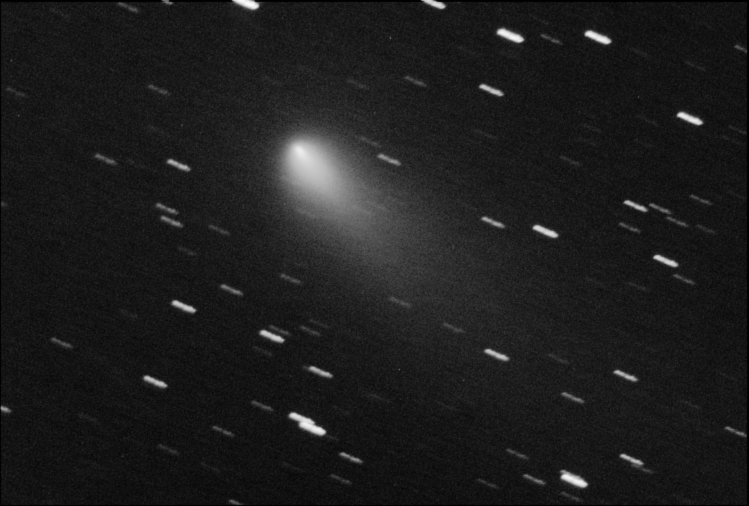
Comet Schwassmann-Wachmann 3: fragment "B". April 30, 2006.
Combination of 10, 1 minute images. SBIG ST-9E CCD.
10" f/6.3 at prime focus.
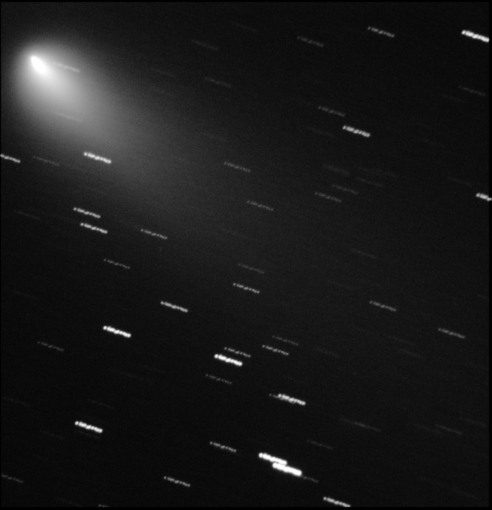
Comet Schwassmann-Wachmann 3: fragment "B". April 30, 2006.
Combination of 10, 1 minute images. SBIG ST-9E CCD.
16" f/10 schmidt-cassegrain with f/6.3 focal reducer.
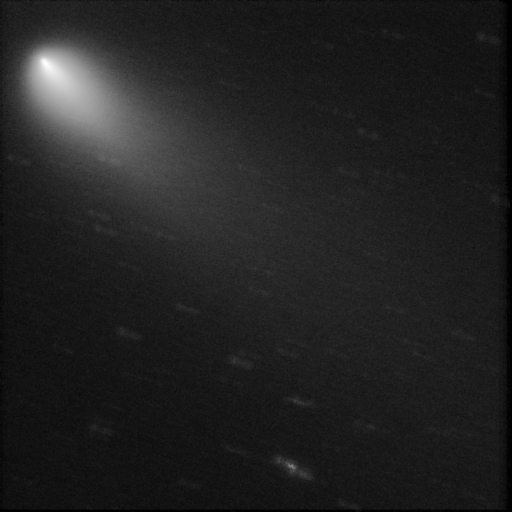
Comet Schwassmann-Wachmann 3: fragment "B". April 30, 2006.
Combination of 10, 1 minute images. SBIG ST-9E CCD.
16" f/10 schmidt-cassegrain with f/6.3 focal reducer.
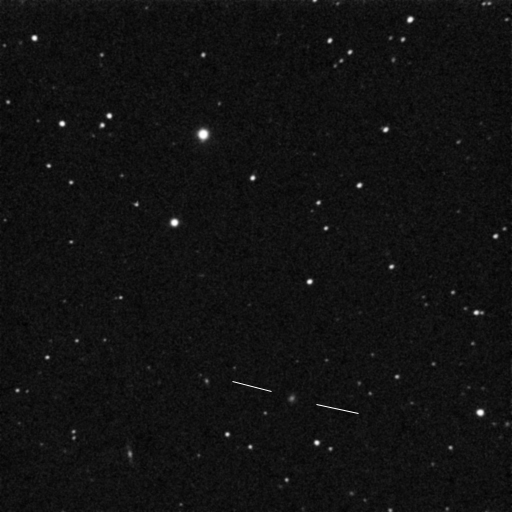
Comet Schwassmann-Wachmann 3: fragment "G". April 30, 2006.
Combination of 10, 1 minute images. SBIG ST-9E CCD.
16" f/10 schmidt-cassegrain with f/6.3 focal reducer.
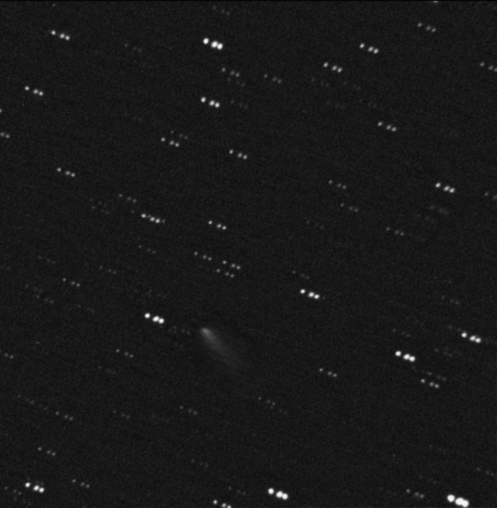
Comet Schwassmann-Wachmann 3: fragment "P". April 30, 2006.
Combination of 10, 1 minute images. SBIG ST-9E CCD.
16" f/10 schmidt-cassegrain with f/6.3 focal reducer.
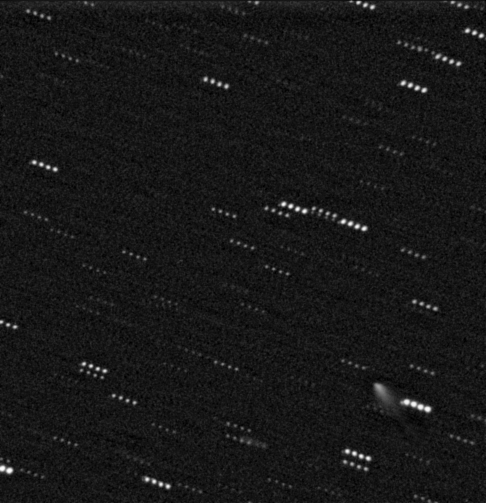
Comet Schwassmann-Wachmann 3: fragment "R". April 30, 2006.
Combination of 10, 1 minute images. SBIG ST-9E CCD.
16" f/10 schmidt-cassegrain with f/6.3 focal reducer.
By early May, photographs made with large telescopes and the HST, showed continued disintegration of the comet nuclei, particularly fragment "B". This fragmentation was also visible
in images taken with smaller instruments as a change in the structure of the comae.
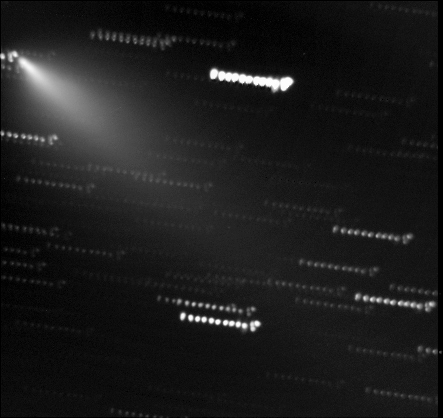
Comet Schwassmann-Wachmann 3: fragment "B". May 7, 2006.
Combination of 11, 1 minute images. SBIG ST-9E CCD.
16" f/10 schmidt-cassegrain with f/6.3 focal reducer.
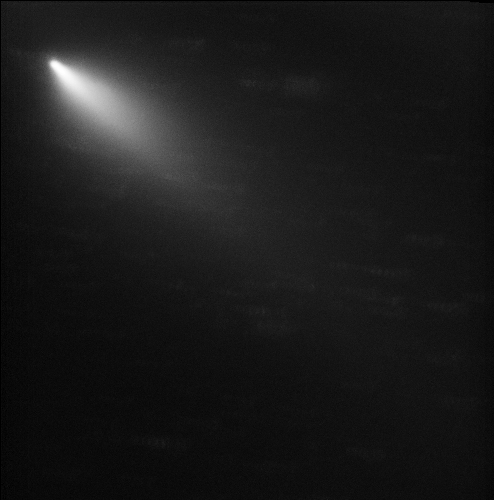
The same image as before, but processed with a median filter to remove the stars. Notice how the head of the comet has changed due to the nucleus undergoing further disintegration.
High resolution images with the HST showed numerous fragments braking away from the main nucleus.
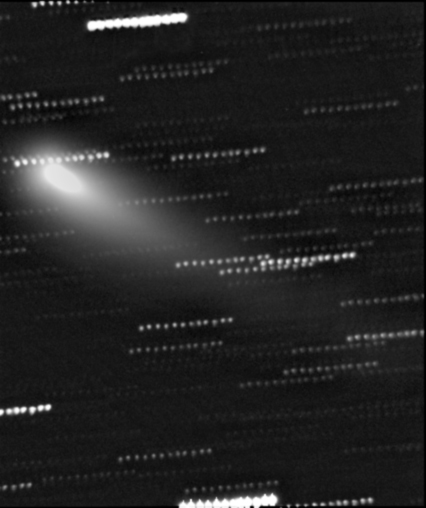
Comet Schwassmann-Wachmann 3: fragment "C". May 7, 2006.
Combination of 17, 1 minute images. SBIG ST-9E CCD.
16" f/10 schmidt-cassegrain with f/6.3 focal reducer.
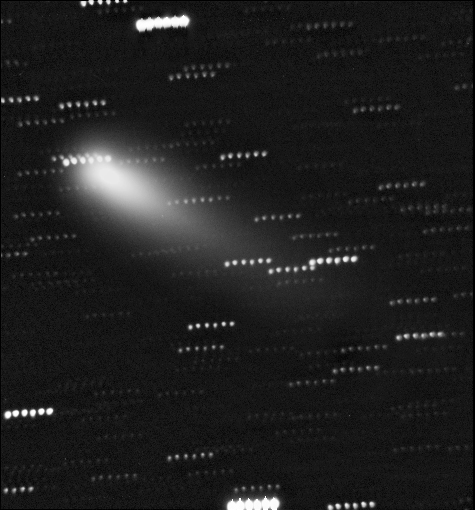
Comet Schwassmann-Wachmann 3: fragment "C". May 7, 2006.
Combination of 6, 1 minute images. SBIG ST-9E CCD.
16" f/10 schmidt-cassegrain with f/6.3 focal reducer.
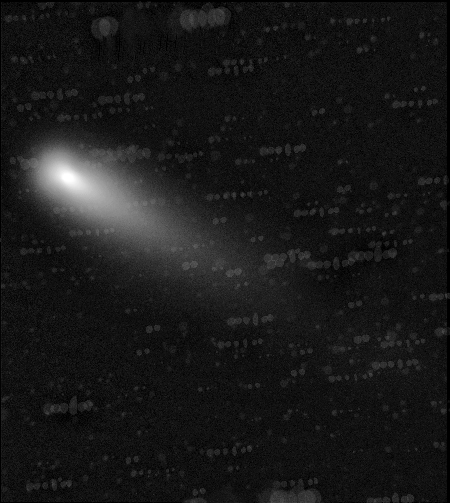
The same image as before, but processed with a median filter to remove the stars.
Notice how far back from the leading portion of the coma the central condensation is.
During June, I travelled to Australia for more observations of the comet, since by then it was difficult to observe from the northern hemisphere. Unfortunately the observatory I had intended to observe from was unavailable at the time. However a friend loaned me an 8" Celestron and so I was able to obtain some CCD observations as well as film images.
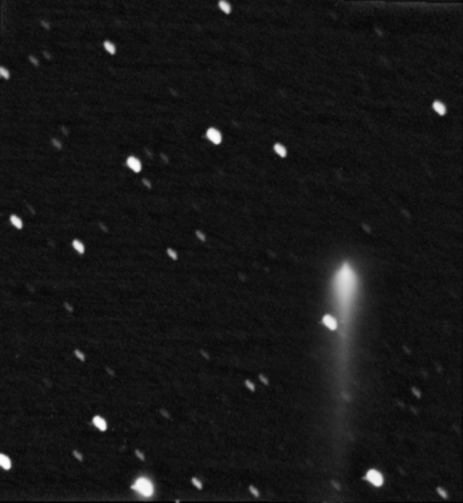
Comet Schwassmann-Wachmann 3: fragment "B". June 22, 2006.
Combination of 20, 1 minute images. SBIG ST-9E CCD.
8" f/10 schmidt-cassegrain at prime focus.
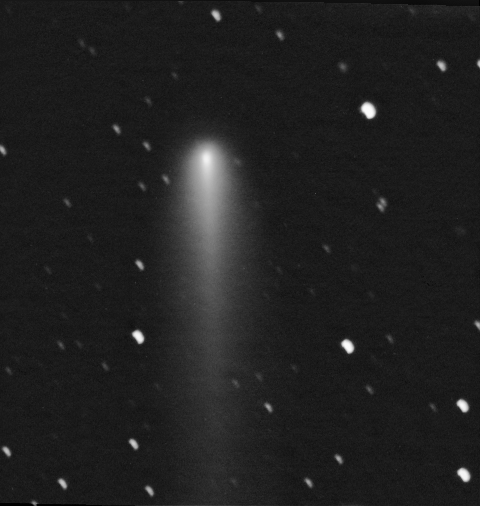
Comet Schwassmann-Wachmann 3: fragment "C". June 22, 2006.
Combination of 15, 1 minute images. SBIG ST-9E CCD.
8" f/10 schmidt-cassegrain at prime focus.
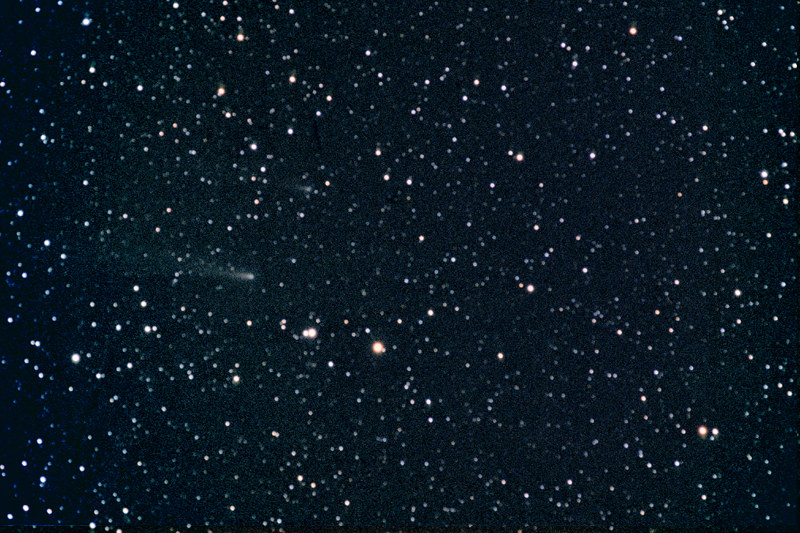
Comet Schwassmann-Wachmann 3. June 23, 2006.
Combination of 2, 20 minute images. Fuji Provia 400 film.
300mm f/2.8 Canon lens.
Fragments "B" and "C" are visible in this photograph. Fragment "C" is the brighter component.
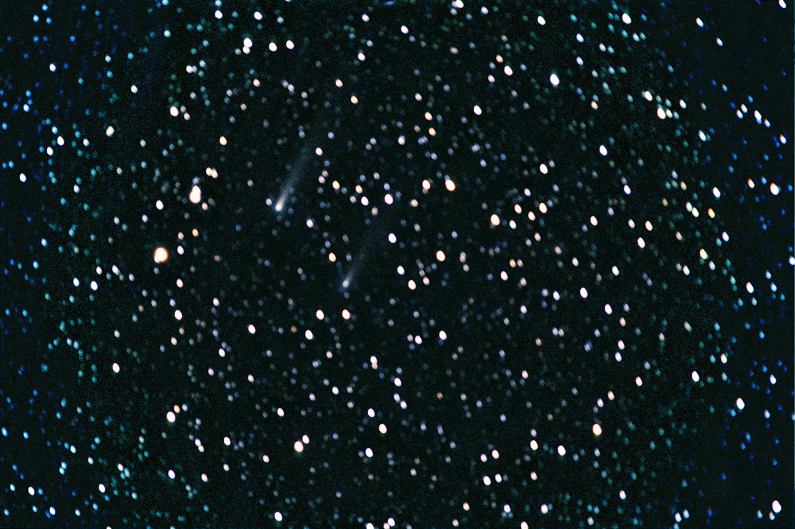
Comet Schwassmann-Wachmann 3. June 24, 2006.
Combination of a 50 minute image and a 36 minute image. Fuji Provia 400 film.
300mm f/2.8 Canon lens.
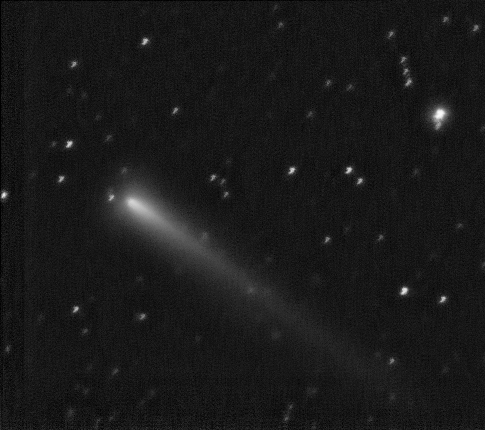
Comet Schwassmann-Wachmann 3: fragment "B". June 24, 2006.
Combination of 15, 1 minute images. SBIG ST-9E CCD.
8" f/10 schmidt-cassegrain at prime focus.
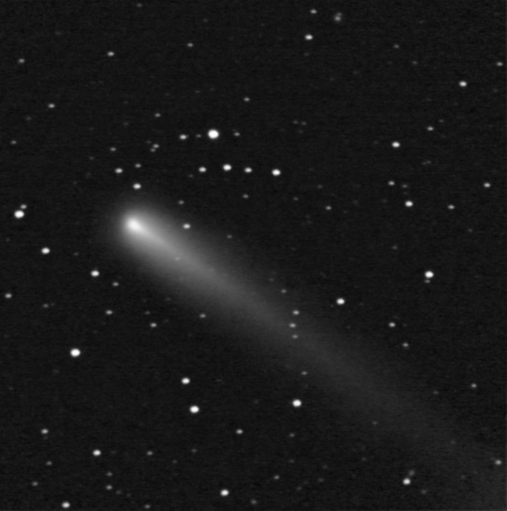
Comet Schwassmann-Wachmann 3: fragment "C". June 24, 2006.
Combination of 10, 1 minute images. SBIG ST-9E CCD.
8" f/10 schmidt-cassegrain at prime focus.
The comet had peaked in brightness during the beginning of June and by the end of the month was starting to fade quite rapidly. My final attempt to photograph the comet was on August 14. Only fragment "C" could be recored.
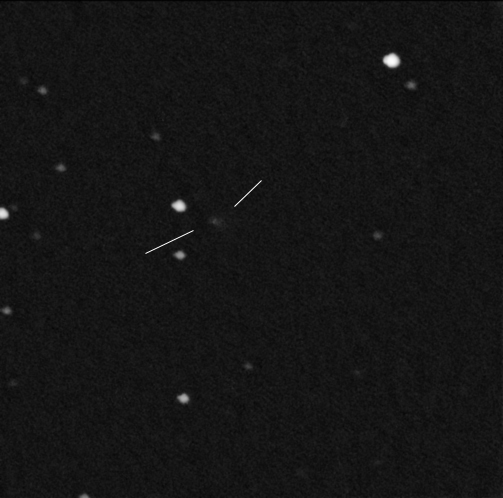
Comet Schwassmann-Wachmann 3: fragment "C". August 14, 2006.
Combination of 10, 1 minute images. SBIG ST-9E CCD.
8" f/10 schmidt-cassegrain at prime focus.






















